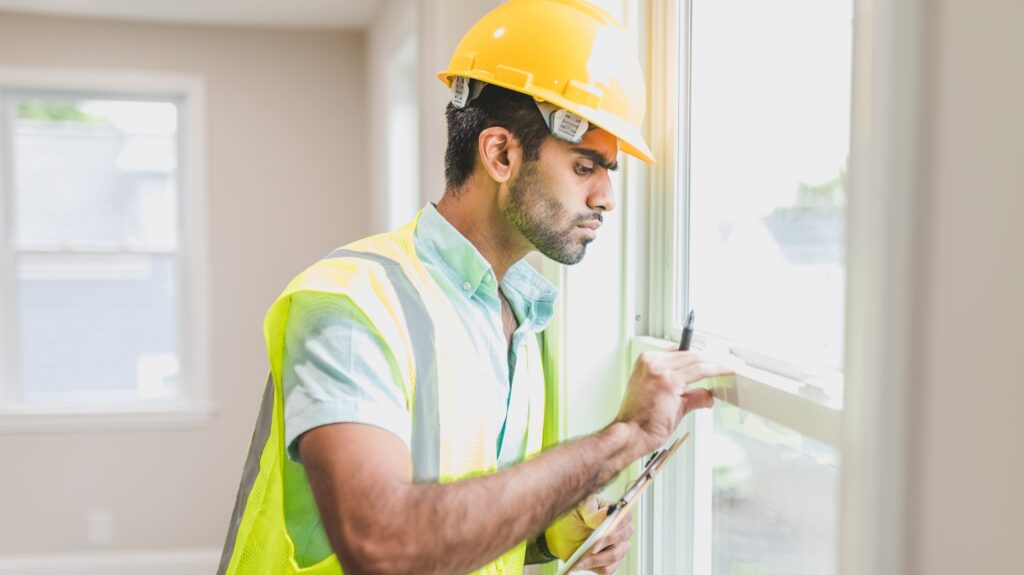6 Home Improvement Projects You Should Never DIY

The do-it-yourself (DIY) projects have infiltrated home improvement, driven by a mix of reality TV inspiration and the satisfaction of personal accomplishment. While this approach can be both fun and cost-effective for certain projects, it’s crucial to recognize its limits. Not all home improvement projects are suitable for a DIY approach. In fact, some can be downright dangerous, potentially leading to costly mistakes or even putting your safety at risk.
This guide delves into those home improvement endeavors that are best left to the professionals, ensuring that your home remains a safe and enjoyable space.
Contents
Toggle1. Asbestos Removal
Asbestos, once a popular building material, is now known for its health risks, particularly in older homes where it was used for insulation, flooring, and roofing. If disturbed, asbestos fibers can become airborne and pose serious health risks, including lung cancer and asbestosis. The removal of asbestos is not a task for the amateur DIYer. It requires specialized knowledge, tools, and safety measures to handle and dispose of the material safely.
Professional asbestos removal teams are equipped with the necessary protective gear and follow strict safety protocols to minimize the risk of exposure. They also understand the legal requirements for safe disposal. Attempting to remove asbestos without this expertise can lead to dangerous exposure and potential legal issues, especially if the asbestos is improperly disposed of. The risks associated with asbestos removal make it a project where professional intervention is non-negotiable.
2. Bathtub Remodeling and Advanced Plumbing
Bathtub remodeling is a prime example of a project that often appears deceptively simple. The process involves more than simple aesthetic changes; it requires a deep understanding of plumbing systems. Incorrectly installing a bathtub can lead to severe water damage, mold growth, and structural issues that can be costly to repair. For instance, ensuring the bathtub is properly sealed and connected to the existing plumbing system demands precision and understanding that typically only professionals possess.
Moreover, plumbing work often requires adherence to specific codes and standards, which vary by location. Professionals not only have the skills and tools necessary for such tasks but also the knowledge of relevant regulations. While hiring a remodeler and plumber might seem like an additional expense compared to a DIY approach, it can save money and headaches in the long run by preventing potential disasters.
3. Gas Appliance Installation
Installing gas appliances, such as ovens, stoves, or heating systems, is another area where DIY can be risky. Incorrect installation can lead to gas leaks, which pose serious risks of fire or explosion. Furthermore, a faulty installation can result in carbon monoxide poisoning, a silent but deadly threat. Professional installation ensures that these appliances are fitted correctly and safely, adhering to all safety standards and regulations.
Qualified technicians have the training to handle gas lines safely and test the installation thoroughly to prevent leaks. They also have the expertise to ensure that the appliance operates efficiently and safely. While it might be tempting to save money by attempting this task yourself, the potential risks far outweigh the cost savings. In the case of gas appliance installation, it’s always best to err on the side of caution and seek professional help.
4. Window Replacement: Precision and Expertise Required
Window replacement may seem like just another item on the DIY to-do list, but it’s far from a straightforward task. The complexity of window installation often lies beyond the scope of average DIY skills. A properly installed window is crucial for ensuring energy efficiency, security, and the overall aesthetic appeal of your home.
One of the main challenges in window replacement is achieving a perfect seal. A poorly installed window can lead to air leaks, which compromise the energy efficiency of your home, leading to higher heating and cooling costs. There’s also the matter of correct fitting. Windows come in various sizes and styles, and even a slight miscalculation can mean a window that doesn’t fit the space. This not only affects the look of your home but can also compromise its security.
Moreover, modern window technologies, like double-glazing and specialized coatings, require specific installation techniques to function correctly. Professional window installers not only have the necessary tools and knowledge but also understand the nuances of different window types. They ensure that your windows are installed correctly, function optimally, and last for many years.
5. Foundation Repair: The Bedrock of Your Home
The foundation of a house is its most crucial structural element. Any issues with the foundation, such as cracks or settling, can have serious implications for the entire structure. DIY foundation repair is highly risky; it requires a deep understanding of structural engineering principles and the right equipment.
Identifying the root cause of foundation issues is a task in itself. Factors such as soil conditions, water drainage, and the original construction all play a part. Professionals in this field have the expertise to diagnose these problems accurately and propose effective solutions.
The risks of getting foundation repair wrong are significant. Improper repair methods can lead to further damage, jeopardizing the safety of the entire building. In some cases, such repairs might even reduce the value of your property or violate local building codes. By hiring a professional, you ensure that the job is done right, keeping your home safe and secure.
6. The Hidden Dangers of DIY Demolition
Demolition work, whether it’s tearing down a wall or dismantling an old shed, is often perceived as the fun part of home renovations. However, it’s far from child’s play. DIY demolition can quickly become dangerous if not done with the right knowledge and tools.
The primary risk in demolition is the potential for unexpected structural issues. Non-load-bearing walls can be deceiving, and removing one might compromise the structural integrity of your home. Additionally, there are often hidden elements like electrical wiring, plumbing, or gas lines that, if disturbed, can lead to serious accidents.
Moreover, demolition work generates a lot of debris and dust. Without proper safety equipment, this can be hazardous, particularly in older homes where materials like asbestos or lead paint might be present. Professional demolition crews are equipped to handle these materials safely and dispose of them according to local regulations.
The logistics of debris removal is another aspect that’s often overlooked in DIY demolition. Professionals have the means to dispose of demolition waste safely and efficiently, adhering to environmental regulations and ensuring that the site is left clean and safe.
Conclusion
While the allure of DIY home improvement projects is undeniable, it’s essential to recognize their limitations. Certain tasks, especially those involving intricate skills, potential health risks, or structural changes, should be left to professionals. Not only does this approach ensure safety and compliance with regulations, but it also guarantees the longevity and effectiveness of the work done.
Recommended For You
Mastering Home Maintenance: Pro Tips for Every Homeowner
Most Inside
Most Inside offers high-quality recommendations and valuable updates to enhance all aspects of your life, providing premium guidance and enriching experiences.




